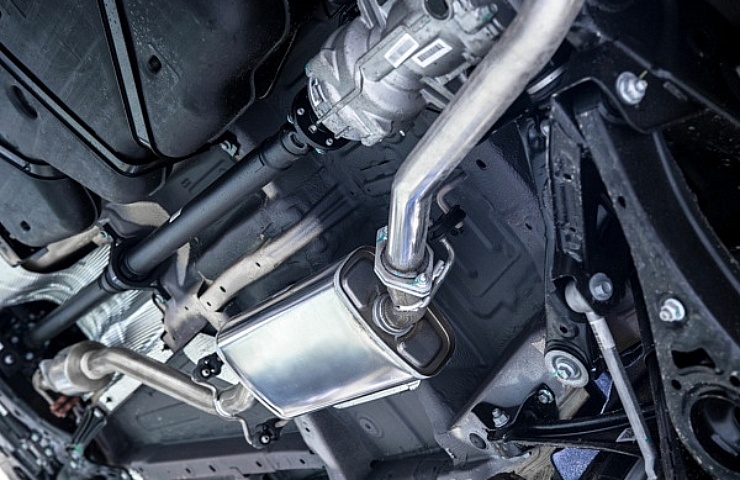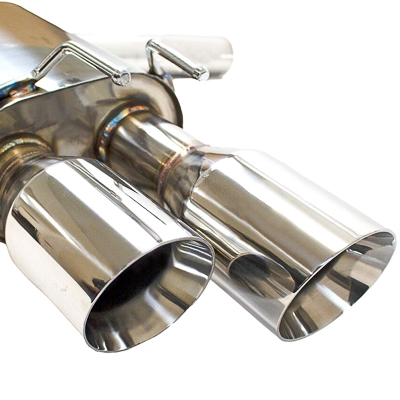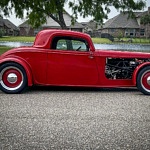Contents
The Function of the Exhaust System
The exhaust system contains a series of pipes that route the exhaust gasses away from the engine. The manifold collects the gasses and transfers them out of the vehicle’s back end. But that’s not all the exhaust system is responsible for. Here are three other functions to consider.
- Controls noise – The sound of the combustion engine at work is dampened—or muffled—as the exhaust gasses travel through the pipes to the muffler. The car would be extremely loud without the muffler or exhaust pipes. Even a crack in one of the pieces makes the system noticeably louder.
- Improves engine performance – The faster the exhaust gasses leave the vehicle, the sooner oxygen is taken in to create more power. With a well-functioning exhaust, you can expect more power from the vehicle. That’s why drivers install performance exhaust systems to help the engine breathe better.
- Improves fuel economy – Fuel economy improves for the same reasons that performance is heightened. As the engine and exhaust work as intended, the car can run more efficiently. Any blockages or imbalances in the exhaust can cause the vehicle to use more fuel than needed.
Main Components of an Exhaust System
Starting at the engine, several parts help remove exhaust gasses from the system. Here are the main components to consider.
Discover: How a Car Engine Works
Exhaust Manifold
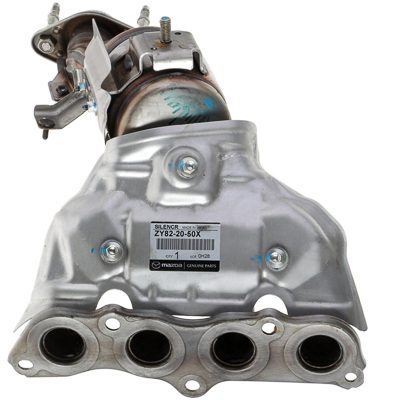
OEM Mazda exhaust manifold with integrated catalytic converter
The exhaust gasses hit the exhaust manifold first. The manifold collects the exhaust gasses from each port in the cylinder head. An inline engine contains one exhaust manifold, while V and flat engines contain two, one for each cylinder bank.
Catalytic Converter
The catalytic converter (“cat” for short) transforms harmful gasses into elements that are better for the environment. The conversion turns the gasses into carbon dioxide, water, and nitrogen with the help of precious metals inside the cat. The location of the catalytic converter varies by vehicle. Some are integrated into the exhaust manifold, while others are connected to the exhaust pipes under the car. Some vehicles have more than one catalytic converter.
Read: What Is a Catalytic Converter and Why Are People Stealing Them?
Oxygen Sensors
Oxygen sensors measure how much oxygen is in the exhaust gas. Most modern vehicles contain two O2 sensors:
- Upstream O2 sensors before the catalytic converter
- Downstream O2 sensors after the catalytic converter
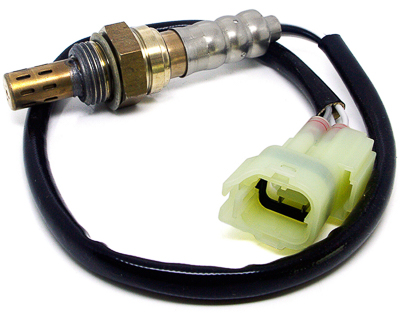
An exhaust oxygen sensor for a Suzuki Sidekick
Cars with more than one catalytic converter will have more oxygen sensors too. Information from the oxygen sensors is sent to the engine’s computer, where adjustments are made to balance the engine’s air-fuel mixture. The downstream oxygen sensor also helps monitor how well the catalytic converter is working.
Shop now for car & truck oxygen sensorsMuffler
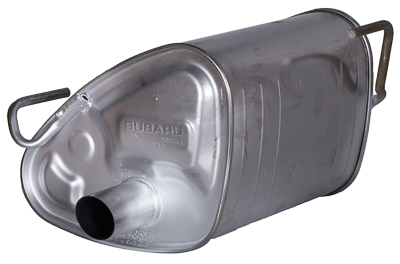
A single Subaru exhaust muffler
The muffler does exactly what it says: it muffles the noises made by the engine. Some vehicles also have a resonator that cancels out the engine noises of particular frequencies, and some have more than one muffler.
Exhaust Pipes
Throughout the exhaust system, pipes connect the various components. Exhaust pipes are constructed from stainless steel or aluminum to prevent corrosion and rust.

A Subaru resonator exhaust pipe
Tailpipe
The tailpipe is the last part of the exhaust system. It pushes the cleaned exhaust gasses from the catalytic converter away from the vehicle into the air around it. There’s at least one tailpipe included per muffler, sometimes more.
Discover: How to Find and Fix an Exhaust Leak
Supporting Parts
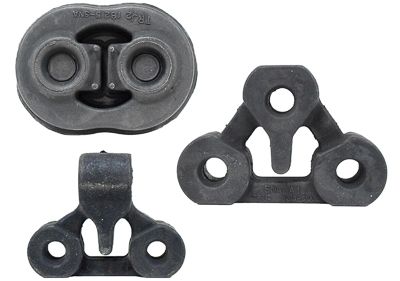
Exhaust hangers
It’s easy to overlook the minor players in the exhaust system. Yet without exhaust gaskets, the various parts wouldn’t have a tight seal between them. You also need exhaust hangers to mount the pieces.
Finally, heat shields protect the car and objects around the exhaust system from excessive temperatures. The exhaust pipes typically get as hot as 400°F to 500 °F.
How to Tune the Exhaust System to Impact Performance
An exhaust with better flow helps to increase horsepower by allowing oxygen to enter the engine faster. When choosing a sports exhaust, it’s important to consider the layout, pipe diameter, and possible obstructions to the airflow.
You may see an improvement by changing out any part of the exhaust with one geared toward performance. However, more significant gains can be made by replacing the most restrictive parts, such as the exhaust manifold and the turbocharger downpipe.
Here are some options, allowing you to replace the entire exhaust system or a part at a time.
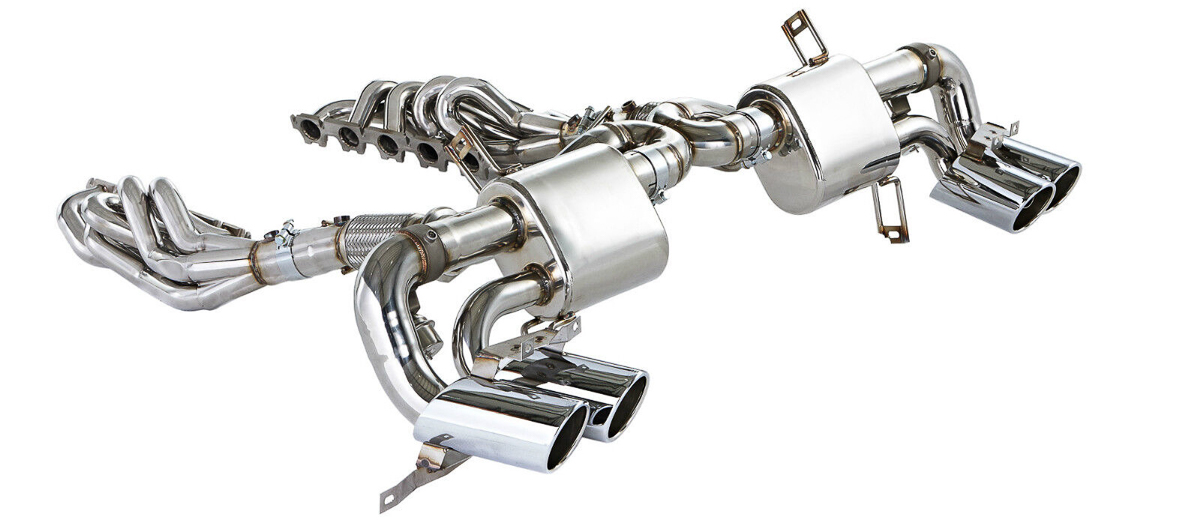
An aftermarket performance exhaust system for a Lamborghini Gallardo
Turbo Downpipe
With a turbocharged engine, the sooner the exhaust gasses get to the turbo, the faster it spins. The turbo downpipe is found right after the turbine outlet. This pipe is usually restrictive, causing the turbo to spin slower than it needs to. As the gasses are restricted, power is held back. By reducing this restriction, you help the turbocharger spool faster. With an increased spin, more air is pushed into the engine, which improves performance.
Exhaust Header
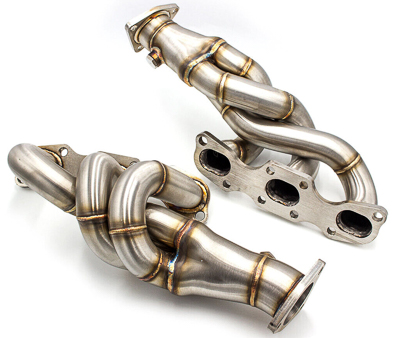
Hand fabricated exhaust headers for a Nissan V-6 engine
The pressure from each cylinder is enough to push exhaust gas into the manifold. However, these gasses can get backed up as they merge. That’s why some people replace the factory or stock exhaust manifold with an exhaust header. With a header, there’s a separate tube for each cylinder head to release exhaust gas into. This design creates a faster pathway through the system.
Low Restriction Pipes
Gasses flow faster through straight pipes than bent ones, yet many parts of the exhaust are bent. Some bends are inevitable, but they don’t always need to be as constricted as the original design. By upgrading to a performance exhaust, you may be able to replace some of the pipes with straighter ones. Each exhaust bend you eliminate creates a faster escape for the gasses.
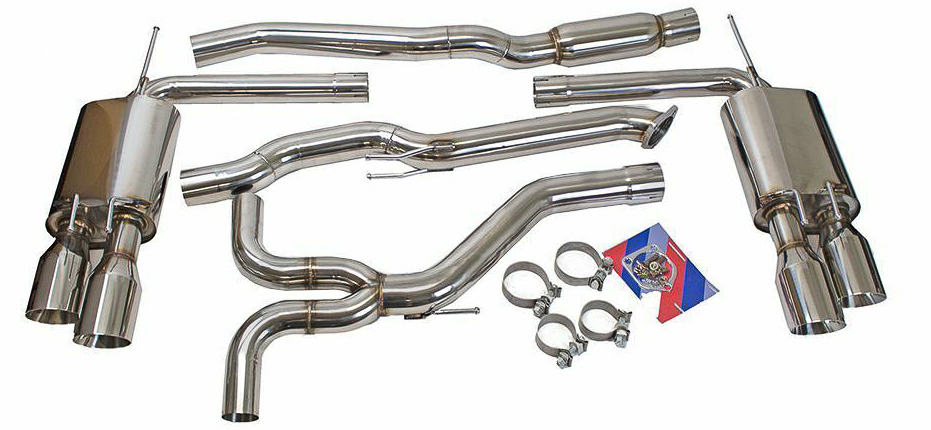
An aftermarket cat-back performance exhaust
It’s also important to consider the diameter of the exhaust pipes. If the diameter is too small, the gas has trouble escaping. On the other hand, a pipe that’s too large leads to more pulsing when the gas leaves the pipe, known as the scavenging effect. You must also consider upgrading the intake system and cylinder heads to optimize airflow for proper scavenging.
Tuned Muffler
Removing your car muffler and letting it be unbridled is not legal. You will end up getting pulled over and likely receive a costly ticket. However, you can upgrade to a performance muffler. Not only will an upgrade create a robust sound, but it also helps the gasses escape faster for increased horsepower.
Shop now for custom mufflers & resonatorsHigh Flow Catalytic Converter
Like the muffler, the catalytic converter can’t be tampered with. Your vehicle will fail emissions testing without the cat. You can find performance cats, but they must be compatible with the vehicle to ensure emissions aren’t compromised.
Tailpipe and Tip
The tailpipe doesn’t increase the performance in any way. In fact, tailpipes are purely aesthetic. However, custom exhaust tips help boost your vehicle’s image to match the newly created performance after upgrading other components.

